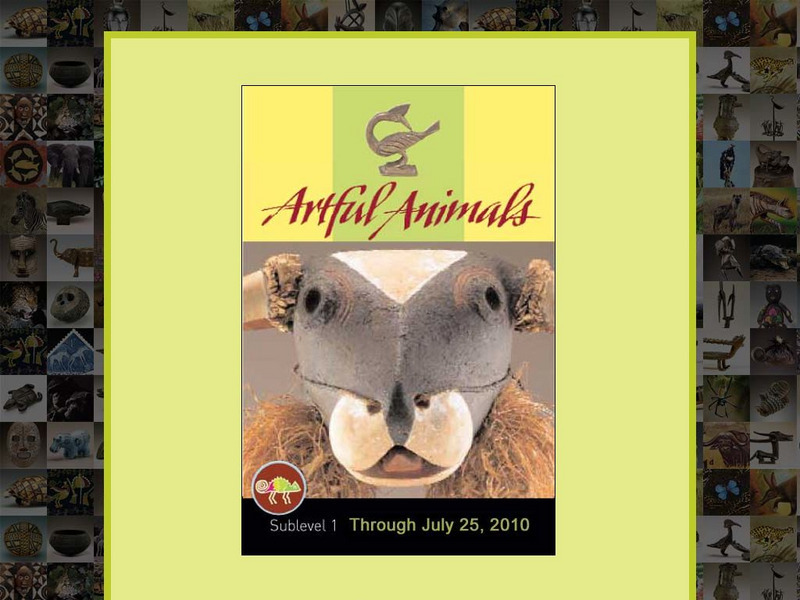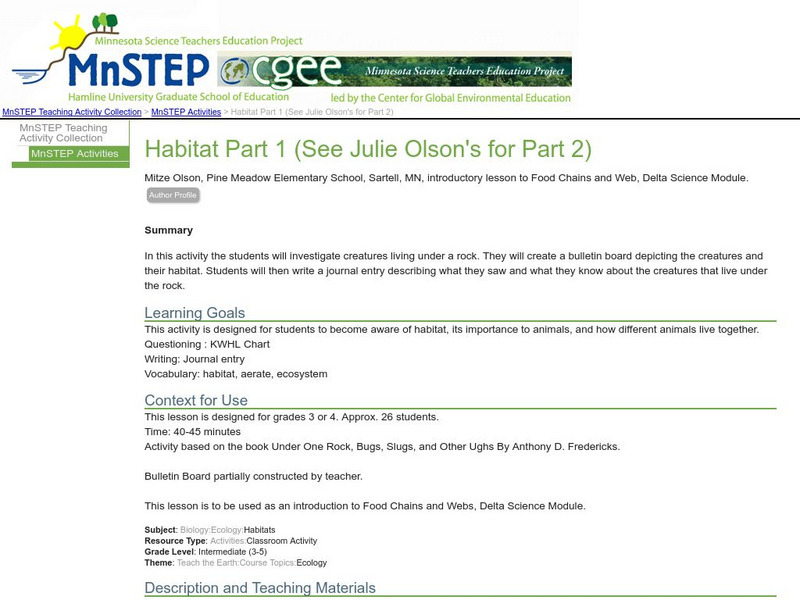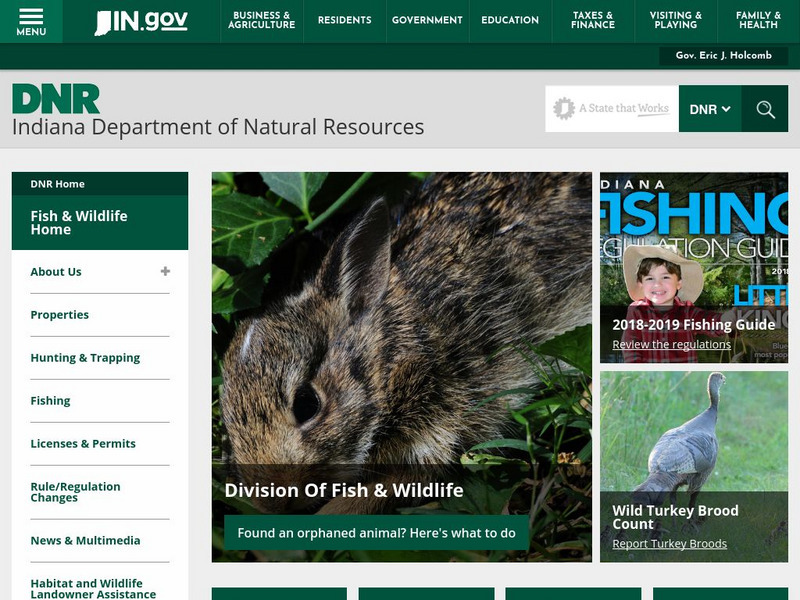ClassFlow
Class Flow: Animals and Their Homes
[Free Registration/Login Required] This flipchart was designed to help students in grades K-2 identify animals and where they live.
PBS
Pbs: Nature: Animals and People: Who's Behaving Badly?
Explore the great variety of animal behaviors by observing them in their natural habitats, and examine the relationship between people, animals and the environment.
Smithsonian Institution
National Museum of African Art: Artful Animals
African artists commonly base their work on animals observed in their natural habitats. Artful Animals lets you view African art that takes animals as its subject and inspiration. Learn about animals as symbols in African art, the beauty...
ClassFlow
Class Flow: South Carolina Animals
[Free Registration/Login Required] The flipchart explores habitats that support the different kinds of animals that live in the state. Students match pictures of animals to their habitats, unscramble letters to find the names of the...
Alabama Learning Exchange
Alex: Hush Down Under
During this lesson learners will listen to a read-aloud of Possum Magic, by Mem Fox. Students will then help the teacher search the Internet for Australian connections (animals and habitats). The learners will write in their journals...
PBS
Wgbh: Peep and the Big Wild World: Games: Animal House Hunt
Cleverly animated matching game asks players to match animals to their homes. [All instructions and prompts are voiced, not written, making this an excellent resource for young children and English language learners who need practice in...
Science Education Resource Center at Carleton College
Serc: Fish Habitats
During this lesson plan, students spend time looking at pictures of fish and their habitat, talking about what all animals need to live, making a poster of a fish habitat, and finally visiting a lake.
EL Education
El Education: Local Habitat Survey and Animal Research
Students observe animals in several habitats and then choose one animal to research. Students learn about physical adaptations that help each animal live successfully in its habitat and then draw a picture of their animal which is later...
Alabama Learning Exchange
Alex: Animal Studies
This was a collaborative effort between Melanie George and Connie Roan. Students will work in collaborative groups and investigate animal characteristics, their habitats and basic needs using the Internet and library. They will then make...
Other
Brooklyn Expedition: Structures
If you've ever wondered how animals use their homes or what we are made of, this is the place to look. This site from the Brooklyn Children's Museum explores the shared characteristics among animal skeletons and homes, architecture, art...
TeachEngineering
Teach Engineering: Biodomes
Students explore the biosphere's environments and ecosystems, learning along the way about the plants, animals, resources and natural cycles of our planet. Over the course of lessons 2-6, students use their growing understanding of...
ClassFlow
Class Flow: Interdependence and Adaptation
[Free Registration/Login Required] In this lesson, children extend their knowledge of the way in which plants and animals in different habitats depend upon each other and are suited to their environment.
Scholastic
Scholastic Explorers: Endangered Ecosystems
A great site with something for all grades. Do research on rainforests, follow field research on animals in Latin America, and show what you know through interactive assessments. Lots to see on this site which is a collaboration of...
Other
Welcome to Biodiversity Hotspots
Conservation International offers this extensive look at some of earth's most vulnerable areas. Some of the most remarkably diverse places in the world also prove to be some of the most threatened. Learn more about the efforts in place...
TVOntario
Tvo Kids: Games: Animal Where?
Complete this puzzle game by clicking and dragging animals to place them in their habitat.
Science Education Resource Center at Carleton College
Serc: Habitat Part 1
Students investigate creatures living under a rock and then present their findings on a class display and writing in a journal.
Other
Nh F&w: Nongame and Endangered Wildlife Program
New Hampshire offers a problem/solution section of their conservation page that illustrates wildlife management challenges in varied habitats.
Other
Indiana.gov: Indiana State Division of Fish and Wildlife
Home of the State of Indiana's Division of Wildlife. This resource is small, but does offer a photo gallery and some information about the animals that can be found in Indiana. It also gives information about three current restoration...
abcteach
Abcteach: Ponds
[Free Registration/Login Required] The abcteach directory contains sample pages from their pond unit for non-members. Handouts are in PDF format.
BBC
Bbc Science & Nature: The Life of Mammals
Students can watch vivid pictures change before their eyes, from lions to monkeys to dolphins. Authors provide interactive games that aid in learning the behavior of animals. Continue to explore by investigating the habitat, diet, and...
ArtsNow
Arts Now Learning: Magic Rocks [Pdf]
In this lesson, students work in groups with each acting as a predator, prey, or family member in a particular habitat. They present their habitat performance to the class and students identify the habitat and animal relationships. Then,...
ClassFlow
Class Flow: Animal Adaptation
[Free Registration/Login Required] Students will investigate the habitats of different organisms and the dependence of organisms on their habitat and recognize that organisms have specific traits that help them adapt so they can carry...
ClassFlow
Class Flow: Where Do They Live?
[Free Registration/Login Required] This flipchart contains an introduction page through which teachers can discuss what all living things need. On subsequent pages students will decide which animal does not belong in the habitat shown.
Science Education Resource Center at Carleton College
Serc: Interdependence of Life: How an Ecosystem Responds to Change
In this biology field investigation, students will investigate the site of an environmental disturbance, identify plant and animal life within that specific area, and compare it to an adjoining forested area. Students will map both areas...






















